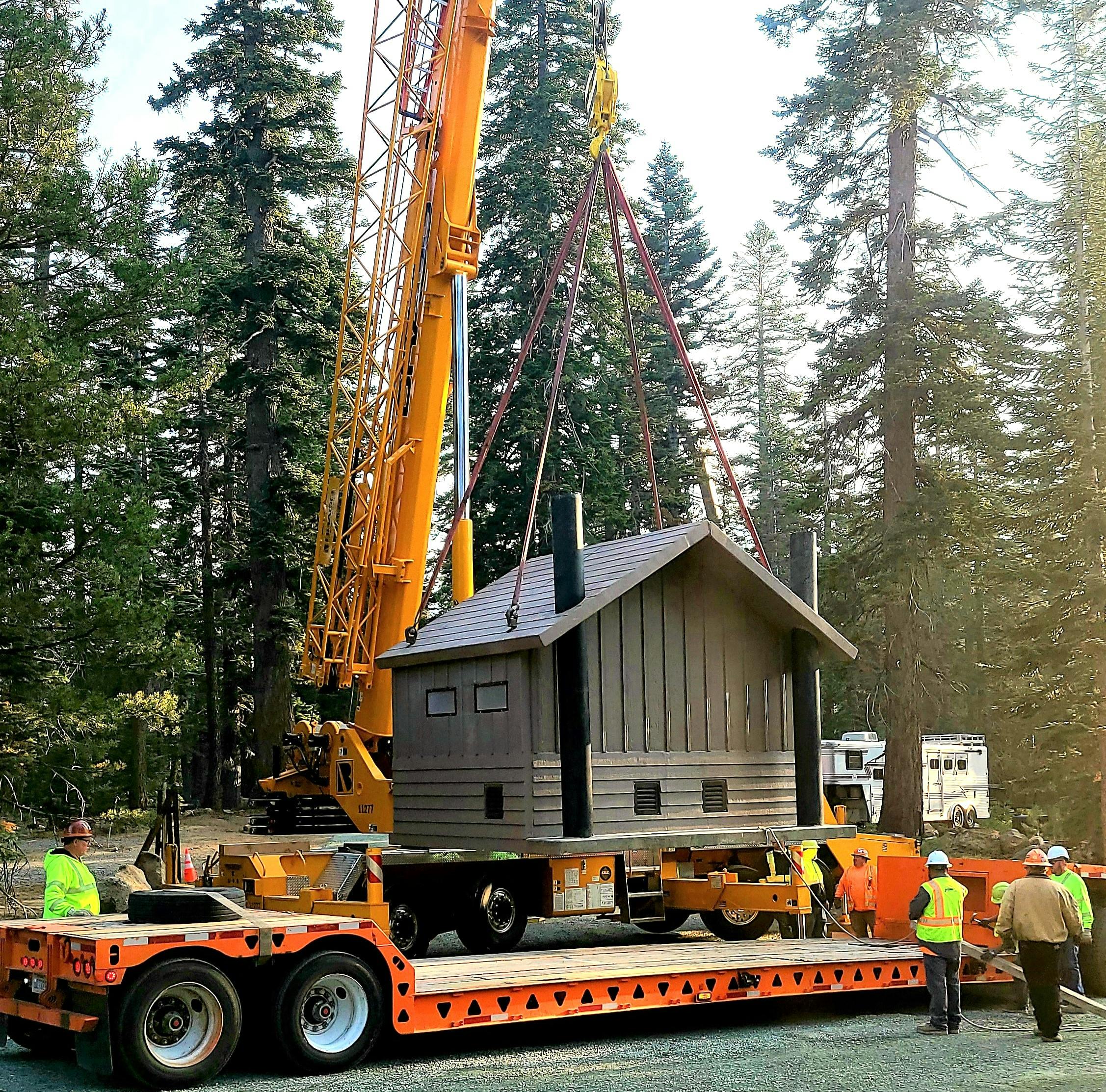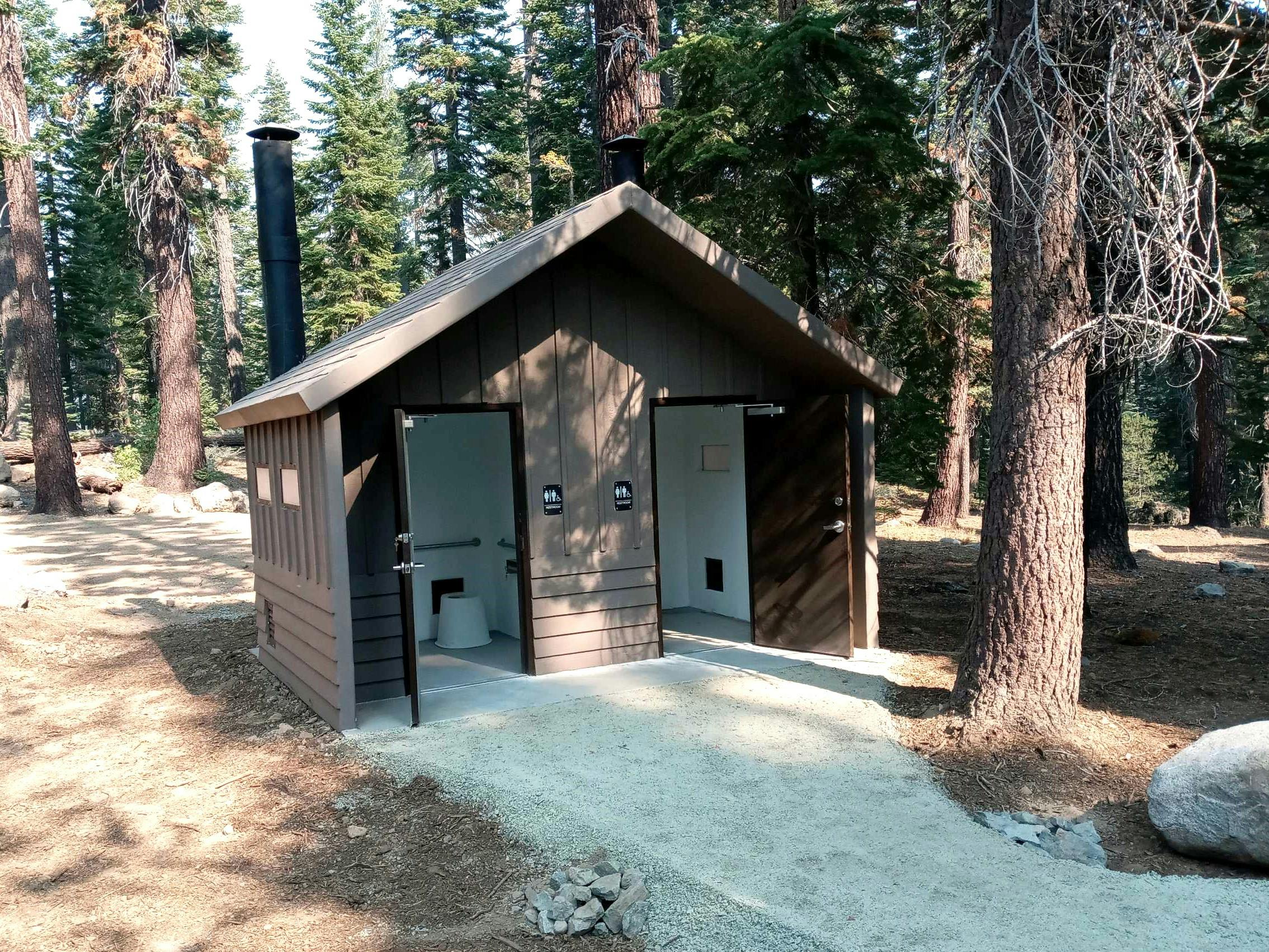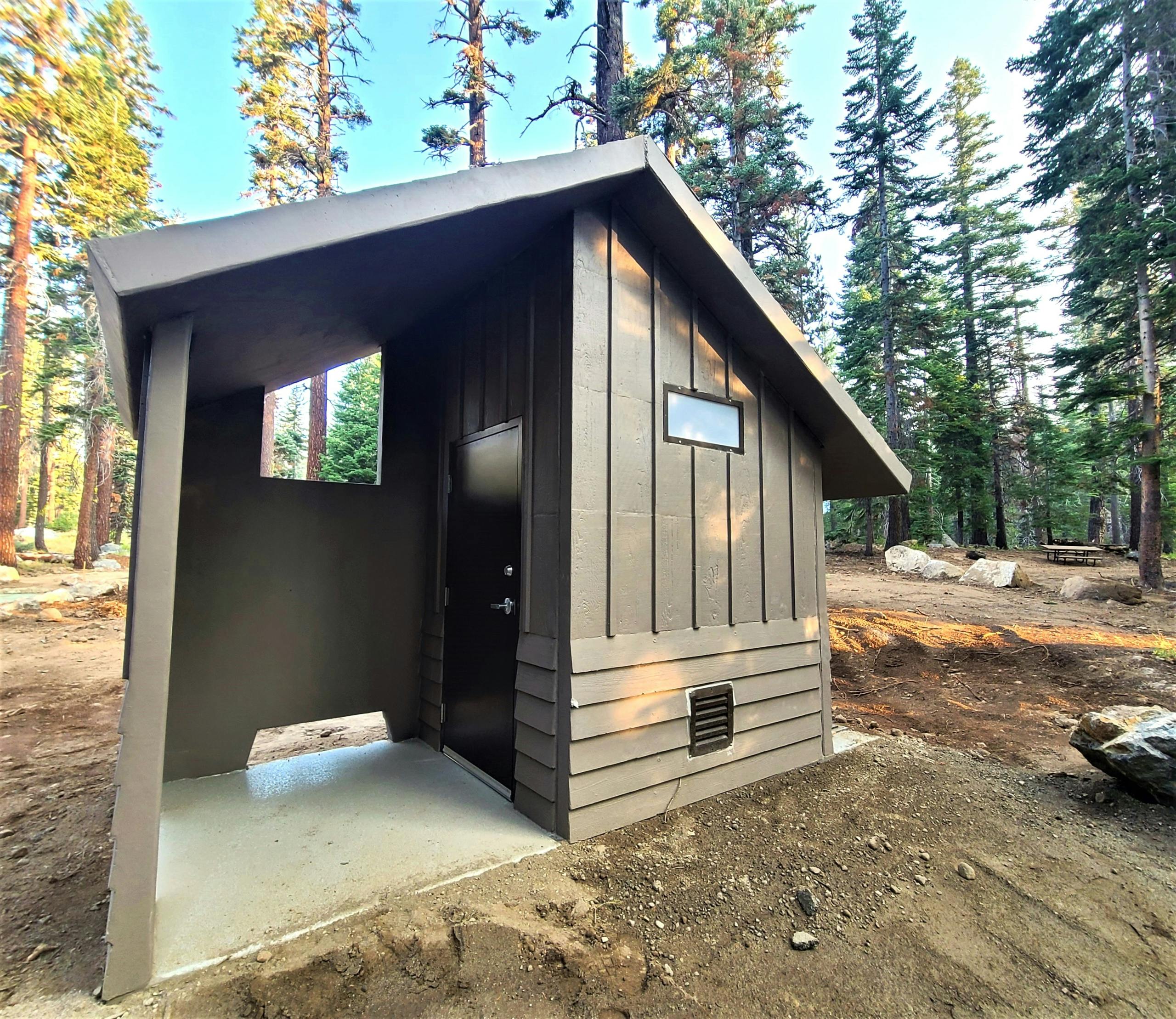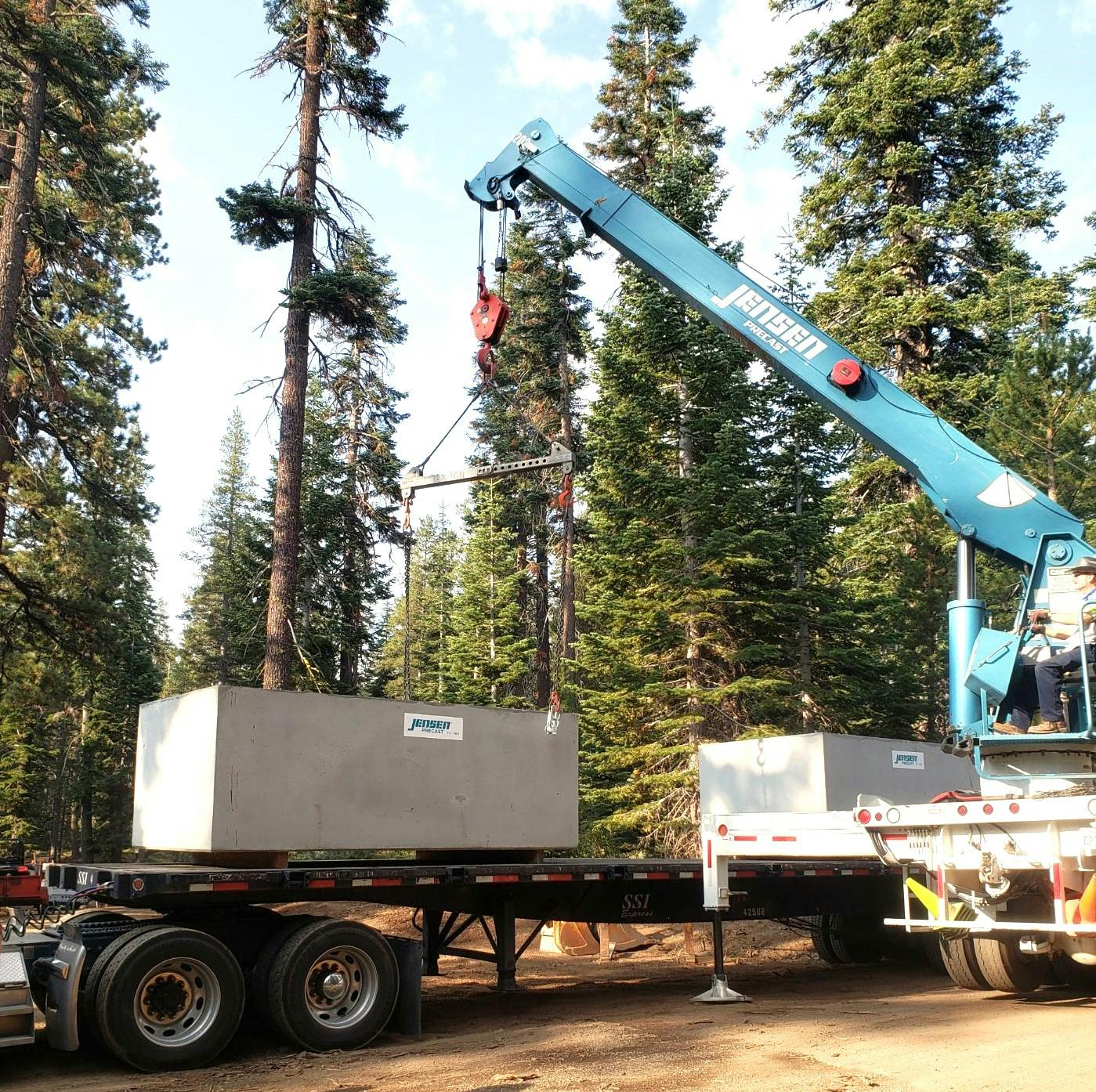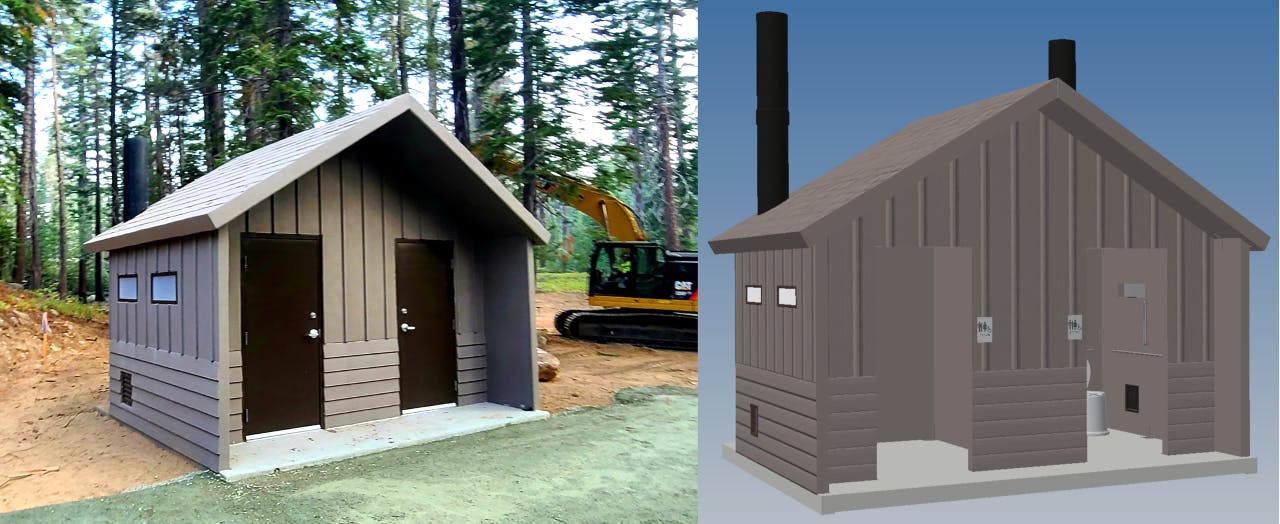Jensen Infrastructure Buildings Benefit Silver Lake Campers
Silver Lake, California
Silver Lake Campground rests at the base of Thunder Mountain, south of Lake Tahoe in the El Dorado National Forest along California State Route 88. The highway traverses Carson Pass, a historic mountain summit traveled by hopeful prospectors during the California Gold Rush. It is a region rich with history that has captivated hikers, anglers, and campers for many generations.
The 200 acre Silver Lake sits in a large granite basin surrounded by a forest and high mountain meadows. Nestled in this majestic Sierra Nevada mountain region, the campground was showing its age after years of heavy use. The El Dorado Irrigation District, which operates the campground for the US Forest Service, also wanted to make it compliant with the American Disabilities Act and took action in 2020 with a major renovation of Silver Lake Campground and Caples Lake Campground to the north.
Jensen entered the picture in early 2020 as the supplier of 14 dry vault pit-style restroom buildings, with 10 heading to Silver Lake and four to Caples Lake. Jensen also produced the underground vaults installed below each of the structures. That’s an impressive amount of precast in its own right, but what makes this project unique is the intricate logistics that went into making the project a success.


Logistical Challenges
Picture a rustic campground set at an elevation of nearly 8,000 feet with two loops of 10’ wide winding road with an array of conifers, aspens, and willow trees pressing in. The challenge: move eight 12’ x 16’ double vault restrooms and two 7’ x 12’ single vault restrooms into the site, around the winding roads and camping pads, and into strategic locations within the campground.
It took a partnership between Jensen, Doug Veerkamp General Engineering, Paul DeLong Heavy Haul, and Bragg Crane to make it happen, according to Ryan Black, Plant Manager at Jensen in Las Vegas, Nevada.
Credit the foresight of Black and his team in recognizing the logistical challenges right off the bat. The key to maneuvering buildings of this size proved to be the lowbed trailer supplied by Paul DeLong Heavy Haul.
“It’s a specialized trailer with hydraulic pumps that allow the three rear axles to turn via remote control,” Black explains. “So we were able to walk this 80’ trailer around extremely tight corners and bends, and navigate this extremely tight roadway to get buildings back into the campground where they needed to be placed.”
In addition to the steerable trailer, the installation crew commissioned a massive 300 ton crane with six tires that all turn, allowing it to make the tight corners and handle the large pick radius required at the site. A 75 ton crane was also onsite to make the transfer from the delivery vehicles to the steerable trailer.
The contractor first needed to clear some trees to widen the road so the trailer and crane could even enter the campground, according to Shawn Patterson, Doug Veerkamp General Engineering’s onsite foreman for the project.
“We needed to open up the roads 15’ to 20’ wide on a normal straightaway, and some of the turns needed to be a little larger than that,” Patterson says. “The steerable trailer cut down on the number of trees we had to remove, but it was quite an undertaking to remove all of that and make sure it still looked like a campground when we were done with it.”
Even with the road opened up, it would still be a tall order to move heavy equipment and structures around the site. “We actually did a test run of sorts,” Black says. “We brought the steerable trailer up to the site so we could prove to ourselves that we could make all the turns that were required before we brought a really expensive crane onsite. We didn’t want to have buildings there and cranes there and all of the sudden be like, “Oh no, none of this is going to work.’ That extra step of planning gave us a high degree of confidence that, when it came time to set the buildings, we were going to be successful.
“One of the things we were able to do is capitalize on the resources of Jensen as a company. All of the buildings were produced out of our Las Vegas plant because that’s where our tooling and our knowledge base is for those types of structures.”
The 22 underground vaults were produced at the Jensen Orland, California, facility. “It was only a couple hours from the site,” Black says. “So we had them cast the required vaults to really save us on trucking, because you can only put two of those vaults on a truck at one time.”


3D Modeling and In House Design
Brandi Gentry-Dunn, Engineering Product Designer at Jensen headquarters in Reno, Nevada, designed the buildings with help from Engineering Intern Morgan Baumann. The structures were cast with a board-and-batten and shiplap finish to mimic rough hewn wood timbers and stained java brown to blend into the forest setting.
Employing In house building design with 3D modeling, Gentry-Dunn worked with Black and his team, who were communicating with the El Dorado Irrigation District team to tweak the design.
“With each building we learned more, and now we’re to the point where we’re able to reduce our building time by about half in producing models and drawings,” Gentry-Dunn explains. “So we’ve really come a long way with our 3D modeling capabilities.”
Before installing the buildings, the Jensen crew teamed up with the contractor to set the vaults and align them to ensure that the restroom installations would go smoothly. They planned to install the 10 buildings at Silver Lake Campground in just three days.
In early September 2020, the Las Vegas production crew loaded the buildings onto the trucks, which left for Minden, Nevada, where they would wait at the Nevada-California border for the pilot car to escort them, one by one, to the site. The two hour roundtrip from the border to the campground gave the installation crew enough time to transfer a restroom building from the delivery vehicle to the steerable trailer, install the building, and return to wait for the next delivery. The crews installed four buildings the first day, five the second day, with the tenth building installed on the third day.
George Ackerman, the onsite construction inspector for the El Dorado Irrigation District, witnessed the teamwork. The site preparation with the installation of the tanks and the coordination among the various crews was integral to the success of the project. “They definitely didn’t understaff any of that work,” Ackerman says. “We were all impressed for three days how well it all went without a hiccup.”

Beating the Weather
“Everybody worked together and communicated, and we were able to get it done,” Black says. “The big push was to get these buildings installed so they could get asphalt down before the weather turned too cold.”
For Site Foreman Shawn Patterson, it was his first one on one project with Jensen and he was happy with the results. “Jensen is fantastic to work with,” Patterson says. “They were able to get in and out, and make everything work. We were able to work on other projects while they were setting the restrooms.”
The Forest Service also played an important role, Patterson says. “They were open to the idea of widening the road, and they allowed me to pick and choose which trees needed to go,” he says. “These buildings are not cheap. We needed to be able to get them in place quickly, and they were open to the idea of whatever it takes to make it look good. And of course you can’t tell that we even removed any trees now that we’re buttoning it back up. It looks fantastic. It’s absolutely gorgeous.”

When your project calls for redefined infrastructure that includes small buildings, contact Jensen by calling (775) 352-2700 or simply fill out an online contact form here.
